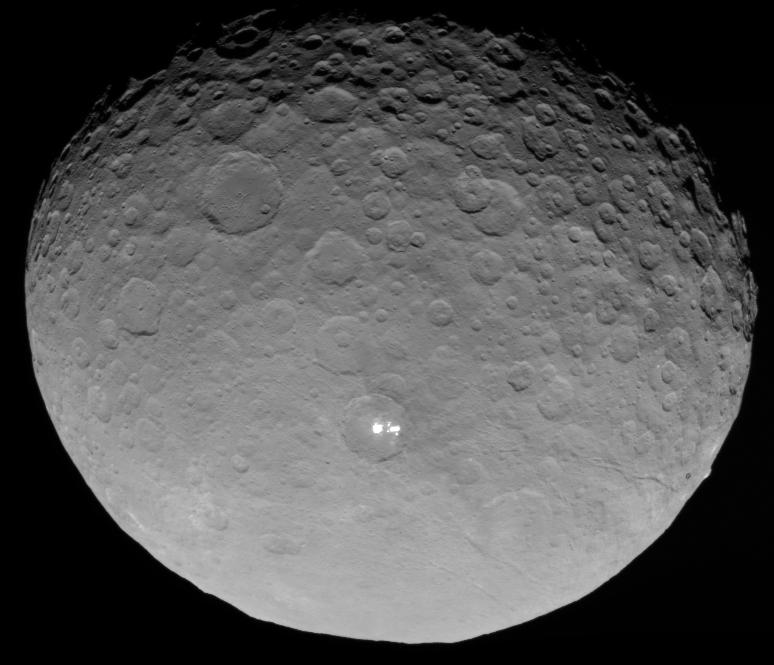
Copyright:
原文:
Now at Ceres, Dawn’s camera recorded this closer view of the dwarf planet’s northern hemisphere and one of its mysterious bright spots on May 4. A sunlit portrait of a small, dark world about 950 kilometers in diameter, the image is part of a planned sequence taken from the solar-powered spacecraft’s 15-day long RC3 mapping orbit at a distance of 13,600 kilometers (8,400 miles). The animated sequence shows Ceres’ rotation, its north pole at the top of the frame. Imaged by Hubble in 2004 and then by Dawn as it approached Ceres in 2015, the bright spot itself is revealed to be made up of smaller spots of reflective material that could be exposed ice glinting in the sunlight. On Saturday, Dawn’s ion propulsion system was turned on to spiral the spacecraft into a closer 4,350-kilometer orbit by June 6. Of course another unexplored dwarf planet, Pluto, is expecting the arrival of a visitor from Earth, the New Horizons spacecraft, by mid-July.
中文翻譯:
在2015年5月4日,Dawn的相機捕捉到矮行星穀神星北半球的更近距離圖像,還有一個神秘的亮點。這幅日照下的圖像展示了一個直徑約950公里的小黑色世界,並是從航天器十五天的RC3 Mapping Orbit中拍攝的,當時距離穀神星約13,600公里(8,400英里)。動畫序列顯示了穀神星的自轉,北極位於畫面的頂部。這個亮點在2004年被哈勃太空望遠鏡拍攝,然後在2015年隨著Dawn接近穀神星而再次拍攝,亮點本身顯示由較小的反射物質組成,這些物質可能是暴露在陽光下的冰層。上星期六,Dawn的離子推進系統被啟動,計劃於6月6日將航天器螺旋下降到更近的4,350公里軌道。當然,另一個尚未探索的矮行星——冥王星,正期待著來自地球的訪客,新地平線號(New Horizons)航天器,將於七月中旬到達。
#穀神星 #Dawn #哈勃 #探測 #矮行星 #宇宙探索 #新地平線 #公開亮點 #航天科技 #科學探索
來源:NASA每日圖片


